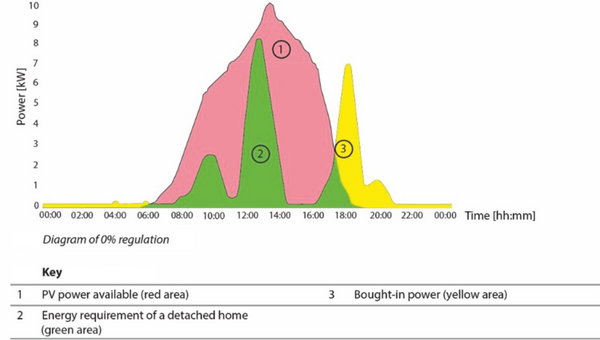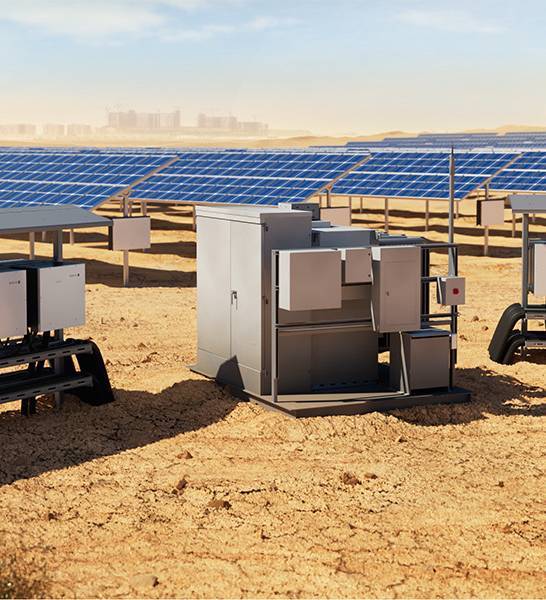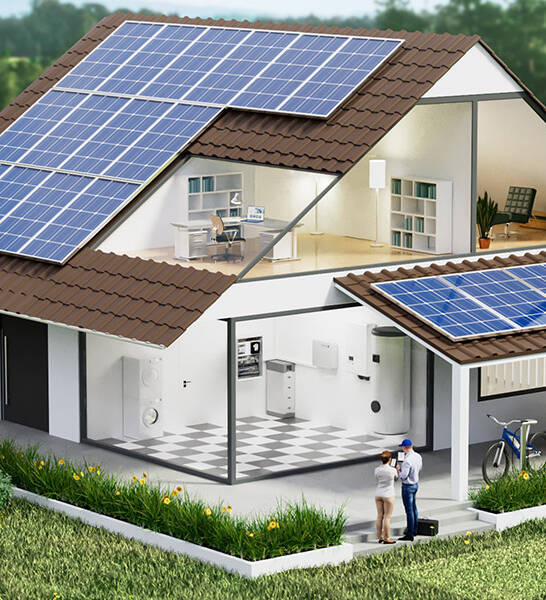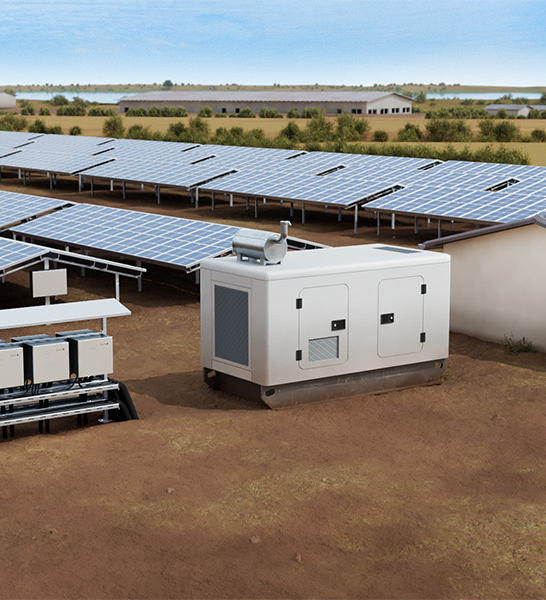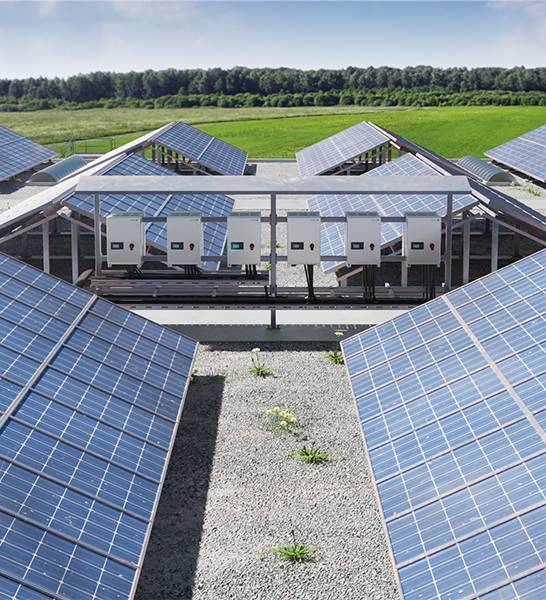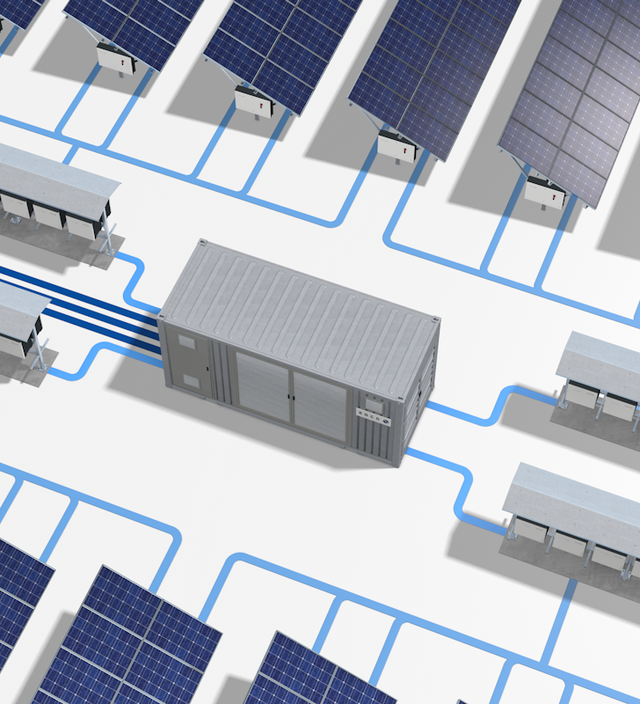Inverters and systems for utility-scale PV

Solutions for zero feed-in and dynamic power regulation
There are instances when operators of solar PV systems are not allowed to feed solar energy into the public grid. For this reason, KACO new energy inverters can be configured for zero feed-in. You can thus make sure that 100% of the solar energy produced is used locally and not fed into the public grid. Similarly, you can set the inverters to feed in only a certain amount of solar energy.
What is the zero feed-in limitation?
The photovoltaic panels are connected in series to form an array, several arrays form a solar power plant, which are connected to the grid via a grid-connected inverter. A photovoltaic inverter generates alternating current and feeds it into the national grid. If the local grid operator refuses to feed energy into the grid, the generated energy must be used for self-consumption or stored in batteries for later use (e.g. during nighttime), the so-called zero feed-in.
When and where is the zero feed-in limitation required?
In some countries, solar power injection is prohibited due to poor grid infrastructure or lack of feed-in tariff regulations. These countries impose conditions on solar power plants, such as the implementation of a zero feed-in system when connected to the grid.
Such a requirement can be solved by deploying blueplanet inverters from KACO new energy and a zero feed-in system. The PV output power will be adjusted dynamically to ensure that the injected power does not exceed the preconfigured limit. This functionality requires an energy meter that continuously measures the consumption of the load.
The diagram represents the PV power that could be generated by the PV system (red curve), the power imported by the loads (green curve) and the power purchased from the grid (yellow curve).
The difference between the red curve and the green curve can be exported to batteries for later use (e.g. during nighttime) in order to be independent of the national grid power.
As a user of the zero feed-in system along with KACO new energy inverters your benefits are:
- Comply with the country’s law
- No active energy is allowed to flow to the grid
- Contribute to the stabilization of the grid
- Reduce the generation of the undesirable harmonics
- Optimize the amount of lost energy by clipping the right amount of energy generated by the sun
- Record your data, monitor your consumption and production
Dynamic power regulation
Dynamic power control at x% (e.g., 70%) takes advantage of the fact that the upper limit does not apply to the inverter itself, but to the point of connection to the public grid. This means that self-consumption of solar energy can be added to the x%.
Depending on the power demand, the inverter dynamically regulates its power so that the maximum allowed x% of the system power is fed into the grid. For this option, however, consider that an energy meter is required, as the inverter needs to know the data from the feed-in point to regulate itself.
The graph represents the x% dynamic control scenario where the available power from the PV system (yellow curve) is fed into the grid. The black line above the yellow curve represents the owner's consumption.
When solar energy is available, the full capacity of the PV inverter can be exploited, meeting the energy needs of the grid and the connected load. When the load demand drops to 0 W, the solar energy is lost and could have been stored in batteries, for example.


